| |
 |
 |
 |
|
|
|
| |
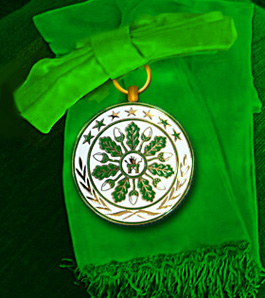 |
United Ancient Order
of
Druids |
|
| |
HISTORY • DRUIDISM in the USA • BRANCHES of the ORDER
ANCIENT DRUIDISM • MODERN DRUIDISM • THE 3 STEPS
COLOR SYMBOLISM • OAKS & MISTLETOE • DAFFODIL • SCHOOLS
PRINCIPLES of DRUIDISM • BRANCHES & MEMBERSHIP • THE 8 POINTS |
|
| |
Much has been said orally and much has been written concerning the history, legend, custom and lore of Druidism and we still find that many have no conception of the make up of the Druidic Fraternity. It will be the design of this page to explain the story behind our present day fraternity, historical background and the aims and purposes of Druidism. Druidism as a Way of Life is explained in the articles below. I hope and trust that each of you will read this page to the end and that everyone will be conversant with Druidism and its many ramifications.
Modern Druidism is conceived out of the Fellowship of our forebears and dedicated to the highest principles of moral virtues. For generations the Druids have been carrying on a program of Constructive Service and Usefulness to each other, to the home, to the community in which we live and to mankind as a whole.
BREAKING NEWS: LONDON — The ancient Druidic tradition has been now formally classed as a religion under charity law for the first time in Britain. That means Druids now have the same status as such mainstream religions as the Church of England.
"The move gives an old practice new validity," said Phil Ryder, the chairman of the 350-member Druid Network of Great Britain. "It will go a long way to make Druidry a lot more accessible," he said.
There are now various Druid orders and about 10,000 practitioners in Britain – and believers said the numbers are growing because more people are becoming aware of the importance to preserve the environment. The Druid Network fought for nearly five years to be recognized under the semi-governmental Charity Commission, which requires proof of cohesive and serious belief in a supreme entity and a moral framework.
Adrian Rooke, a Druid who works as a counselor, said Druidry appeals to people who are turning away from monotheistic religions but still long for an aspect of spirituality in their lives. "It uplifts the spirit," he said. "The world is running out of resources, and in that context it's more important to people now to formulate a relationship with nature."
The Druidic philosophy inculcates the recognition of:
-
Belief in the Supreme Power of the Universe
-
Immortality of the Soul
-
Dignity of the individual man and woman
-
Respect for the rights of others
-
Development of the mental faculties
-
Development of the finer sensibilities of the heart
-
Mutual Protection
-
Development of the Social Virtues
-
Americanism
-
Brotherhood
|
|
| |
|
|
|
History |
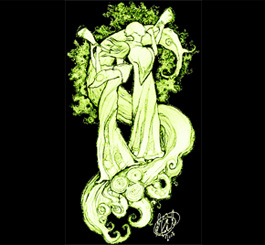 |
|
| |
It was not until the 17th century that the teachings of the Druids were adopted to modern usage when a ritual based upon their moral and fraternal philosophy resulted in a Grove (Lodge) being organized in London, England, in 1771. Since that time modern Druidism has had continued existence all over the world. In 1771, a gentleman named Henry Hurle at a meeting in London, England, seeing the necessity of a harmonious Brotherhood of man, announced: “It appears to be that society lacks good fellowship, hilarity and brotherly love.” He also spoke of the Druids and said “they were of old men who undertook to enlighten the people of their day and who introduced among the ancient Britons the useful and polite arts, and these were the Druids. My proposition is that we form a society for social feeling and we assume the title of those learned men (The Druids), and that we will adopt the endearing name of brothers, universally amongst us.” The wish and the intention of those men was to enlighten the mind, promote harmony, encourage temperance, energy, and virtue. Thus modern Druidism was born.
< to Top of Page >
|
|
| |
|
|
|
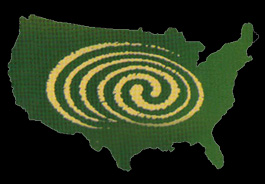
|
Druidism
in the
United States |
|
| |
The first Grove of Druids was instituted in the City of New York in 1830. Gradually the Order branched out in different parts of the States. In 1858, California Grove No. 1 was instituted at old Hangtown (now known as Placerville) under the leadership of the founder of California Druidism. P.N.G.A. [Past National Grand Arch] Frederick Sieg California Grove [No. 1] of Druids is active today and a Druidic monument honoring P.N.G.A. Frederick Sieg adorns the main street of Placerville.
The Druids of today confine themselves to the moral, fraternal, patriotic and benevolent philosophy exemplified by the Druids of old. Their teachings and principles are derived from ancient Druidism, founded on reason and sound morality. The greatest of all Druidic teachers was Merlin, and his Seven Precepts are considered as a moral way of life, the finest oral virtues ever laid down for the guidance of man. These Seven Precepts of Merlin have been observed down through the ages by all Druids.
The Seven Precepts Of Merlin
- First: Labor diligently to acquire knowledge, for it is power.
- Second: When in authority, decide reasonably, for thine authority may cease.
- Third: Bear with fortitude the ills of life, remembering that no mortal sorrow is perpetual.
- Fourth: Love virtue-for it bringeth peace.
- Fifth: Abhor vice-for it bringeth evil upon all.
- Sixth: Obey those in authority in all just things, that virtue may be exalted.
- Seventh: Cultivate the social virtues, so shalt thou be beloved by all men.
< to Top of Page >
|
|
| |
|
|
|
Branches
of the
Order |
 |
|
| |
In California and Nevada the Druidic family is composed of three separate bodies: Groves, being the Brotherhood, Circles, known as the Sisterhood, and the Chapters. known as the Sir Knights and the Fun Branch. A member of the brotherhood branch can in due time join the sisterhood. However, a member of the sisterhood cannot join the brotherhood branch. Both members of the brotherhood and the sisterhood are eligible to join the Chapter branch, however membership in the Chapter branch is limited to brothers and sisters who are Officers of the Grove or Circle or Past Officers. All three branches of the Druidic Fraternity are rooted in antiquity and each branch has its own moral precepts.
The guiding virtues of the Circle Branch are the Seven Star Points:
Honor,
Truth, Justice,
Faith,
Hope,
Love,
Benevolence.
The principles of virtue of the Chapter Branch are:
Equity,
Integrity,
Obedience.
The Druidic Units, brotherhoods, are called Groves (Lodges in honor and memory of the custom of the Ancient Brethren who lit their altar fires in the forest groves). In these grove edifices, the tops were never covered and the Ancient Druids used the sky or heaven as their roof. The Druids belonged to all humanity, non-sectarian.
The motto of the Druids the world over is “United To Assist.”
The aim of the Druids is Unity, Peace and Concord.
< to Top of Page > |
|
| |
|
|
|
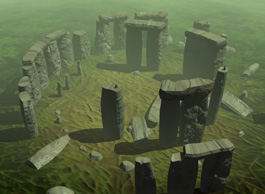 |
Ancient
Druidism |
|
| |
The Order of Druids is ageless, having existence in the dim mists of antiquity. The Druidic Order is perhaps the oldest fraternal organization in the world. The first traces of Druidism dates 6000 years before the birth of Christ or the Christian Era and far beyond the scope of written history. There seems to be no time era when evidences of their ancient existence cannot be found.
Students of antiquity find in the ancient ruins evidence in stone of that which we today call Druidism. That which marks them as Druidic is the pattern in which these stones are laid which show that their builders used certain stars and the sun as points of reference. Such monuments are found in Europe, Asia, South America and the United States. Everyone connects the ancient Druids with the British Isles. However, history reveals that the British Isles were only the last great stronghold of the brotherhood, particularly in Ireland and Wales. They also were numerous in Brittany and Normandy in France, where their monuments are still to be seen covering acres of land in geometric formation.
The members of the Ancient Brotherhood of Druids were the most learned men of their time. They were the physicians, astronomers, mathematicians, musicians, poets, philosophers, legislators and judges of the people as well as their educators in the matter of religion and learning. They were held in such esteem that the Kings sent their sons to be educated by them. In the matters of learning and government their authority was absolute.
Because of their intellect the Druids were feared by the Romans. Julius Caesar found the Druids in the way when he attempted to subdue the Britons. He nearly exterminated them, and wrote concerning them. Augustus Caesar followed and succeeded in driving their remnants to a little island called Mona, now called Aglesey.
The Ancient Druids were marvels of intellectual grasp, profound thought and clear expression. The ancient records, as handed down, throw an illuminating light on the character and customs of our forefathers. When Caesar invaded Britain, 55 B.C., Druidism was the prevailing philosophy. Its cardinal points were “Belief in Supreme Power of the Universe,” and “Belief in the Immortality of the Soul.” In the Ancient Druidic state the Druid was teacher of truth and the dispenser of justice. As teachers they taught that the light of intelligence destroys the darkness of superstition and ignorance, hence the first precept of Merlin, the great Druidic teacher, “Labor diligently to acquire knowledge for it is power.”
< to Top of Page >
|
|
| |
|
|
|
Modern
Druidism |
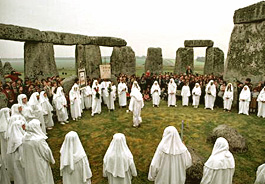 |
|
| |
The Druidic Order is firmly established in all countries and it is the only fraternal order that has an International Grand Lodge which meets with an International Password [may not be true anymore].
The torch atop the Frederick Sieg Memorial Monument represents Knowledge as light dispelling the darkness of ignorance and superstition. It also represents Liberty and signifies good works. The Torch calls for the love and the practice of Truth, Justice and Righteousness. A like aspiration on the part of the individuals and nations would bring a lasting brotherhood, the Druids were ministers of Peace.
As Druids, we acclaim and support all attempts by every society to teach and inculcate, principles of friendship and brotherly love.
Again it is repeated Druidism believes and teaches good citizenship. The Druids are nonsectarian and non-political. The Druids permit no questions of a religious or political nature to be brought into the Grove. No discussion of individuals or families are tolerated. We feel very strongly that the United States is our nation and that our nation needs the help of every citizen and that it might be preserved in strength and principal. The Druids are conscious that in America, of all places, freedom truly exists. The Druids oppose all subversive influence and evil in every form and subscribe to the American principles of life, liberty, and the pursuit of happiness. to the end that our form of government will never perish from the earth.
The lessons and the teachings contained in our ritual and philosophy must continually be taught and instilled into the mind and heart of each Druid, our community and mankind as a whole if Unity, Peace and Concord is to prevail.
Druidism is a “Way of Life,” a system of morality — a purely Non-Sectarian, Social, Moral, Beneficial, Non-Political, Fraternal organization. As stated before, Druidism professes and asserts Faith in the Supreme Power Of The Universe, the Brotherhood Of Man, and the Immortality of the Soul. It grants unto every brother, sister and sir knight Freedom of Thought — expression of the Dignity of the individual man and woman. Druidism by nature is Educational and the lessons of Druidism teaches that the Light of Intelligence will destroy the darkness of superstition and ignorance [which] continues to blind the human race and cause great misery to all mankind.
Although Druidism is neither a religious or political organization, the Druids do partake in a measure of the nature of both. Druidism is not a religion, but the Druids profess a religious Faith, as manifested in their belief of the Almighty God, and the Immortality of the Soul. They are, also, somewhat political because they believe in the respect and the dignity of man and woman, and the Druids do partake in politics in an effort to establish better schools, a better community in which to live and the Druids openly oppose every “ism” which is subversive in nature and contrary to the principles of our government and contrary to freedom [of] thought and the human spirit.
Druidism justifies its existence by rendering a service to our fellow man and mankind. Service to humanity is an important factor in the life and character of a Druid. Repeating, Druidism emphasizes that the only justification for its existence is the Services which its members render unto its brethren and the world at large, to make the world a better place in which to live. Service to others is one of the first lessons of Druidism, and by example, the Druids exemplify true brotherhood assisted by the highest perceptual moral virtues of Merlin. These moral virtues are the greatest ever laid down for the guidance of man or woman. The spirit of brotherhood which is so ever evident and the brothers and sisters give a tangible meaning to the lessons taught by Druidism in making it a philosophy, a way of life.
< to Top of Page >
|
|
| |
|
|
|
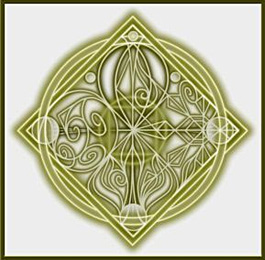 |
The
Three
Steps |
|
| |
The Druidic Fraternity consists of three major divisions: the Ovate, the Bard, and the Druid.
The Ovate was considered a disciple, a learner, a beginner, the seed or egg from which in due course the Bard developed. The Ovate was the first step on the road to becoming a Druid He was a student untrained and unskilled in the various arts of life. To him was given the symbolic color of the earth — Green. The Ovate was especially charged to develop his power of observation by noting the effects of nature upon life and matter. Thus the Ovate became a student of the natural sciences. As stated the color of the Ovate was green. This signified the period of youthful years and was a suitable time for cultivating the kindly feeling of the heart and improving the faculties of the mind. Here we see the commencement of the first precept of Merlin. “Labor diligently to acquire knowledge — for it is power.” The Ovate was the writer of prose or of music.
The Bard developed from the Ovate. As the term connotes, the Bard was the poet of his day. The Bard”s genius took him to a higher flight, and to him was given the color of the Heaven — Blue. The color of the Bard was emblematic of Truth, Purity and Freedom. The Bards were the historians of the people. Our Ritual reveals to us that the niceties of poetical expression, the power of eloquence and the charm of music belonged to the Bards. The Bard was also the peace maker and he advocated advising always what is just and resisting evil in every form, and that there must be obedience to constituted authority.
The final step was to become a Druid. The highest authority of all. He had to pass through the lower grades — that of Ovate and Bard — in his search for Truth and Purity and, having attained thereto, his symbolic color, White, is accorded him. The Druid was the master of all the arts and also had final authority in the judgment of his people. He was their Judge as well as their teacher and Doctor. Our Ritual also tells us that the “Druids (or Druid) was held in such esteem that no public affairs were transacted without their (or his) approbation and their (or his) authority was absolute.” Here we see the influence and the power vested in the Druid.
< to Top of Page >
|
|
| |
|
|
|
Symbolism
of the
Colors |
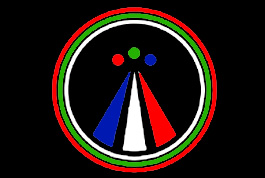 |
|
| |
The symbolism of the colors are the same today as they were in the days of Merlin — the same interpretation applies today as it did to the early Druids.
White: Purity, innocence, joy.
Red: Courage, power, fervency, zeal.
Blue: Heaven (Blue Sky), Godliness, piety, friendship. Loyalty and Justice.
Green: Hope, life, plenty. Prevailing color of vegetation.
< to Top of Page > |
|
| |
|
|
|
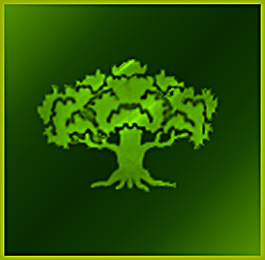 |
Oaks & Mistletoe |
|
| |
The symbol of the Ovate is the Mistletoe. This is a parasitic plant for which the Ancient Druids had great veneration, and to which they attributed many medicinal virtues. It was always cut with a sacred knife of gold amid solemn rites and a great festival closed the ceremonies. The mistletoe grows parasitically on the apple tree, but seldom on the oak. It was consecrated to religious purposes by the ancient Celtic nations of Europe, and was held in high veneration by the Druids when found on the oak, for whatever grew on an oak was thought to be a gift from Heaven.
The oak tree represented the Deity and the mistletoe, when found on the oak signified Man, a creature entirely dependent upon God for support, and yet with an individual existence of his own. It is Humanity clinging to Divinity. The Druids called it All-heal, and represented it as an antidote to all poisons, and a cure for all diseases. [It is, however, poisonous in wrong doses.]
< to Top of Page >
|
|
| |
|
|
|
Daffodil |
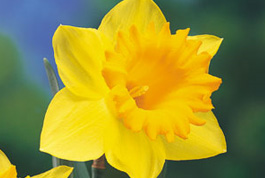 |
|
| |
The ancient writer wrote nothing about the Daffodil but the modern writers on the subject of Druidism write that the Daffodil was accepted by the Druids as their national flower, and the Daffodil is symbolic of Purity. The Daffodil appears early in the springtime of the year. In heralding the spring it blooms at the door of the Hamlet as well as of the Palace. The Druids were believers of Equality to all and hence the Daffodil is the appropriate flower.
|
|
| |
|
|
|
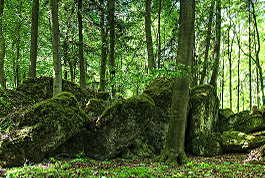 |
Establishment
of
Schools |
|
| |
The modern Druids following the Custom of the Ancient Druids established schools. In the provinces of England, the Druids became a popular institution, there being scarcely an important town or village without it possessed a Druid Grove (Lodge). Although the Druids as a society were used for social and convivial purposes, the Druidic Groves established sick and funeral benefits therewith. In consequence of there being no system of national chairman, one grand feature of the Druidical movement was the establishment of schools for the children and adult members. These schools were scattered over various parts of England and maintained by voluntary contributions of the Druids and friendly sympathizers. Some fifty years after its founding the Ancient Order of Druids had on its roll over 200 groves and a membership well over one-half million (500,000).
|
|
| |
|
|
|
Modern
Principles
of
Druidism |
 |
|
| |
Modern Druidism is a fraternal association, international, with branches in all leading countries of the world; using an international password thus permitting one who is a member of a unit in any country to visit in all other countries or wherever the Druids exist.
The objects of the Order are to unite men together, irrespective of nationality, for mutual protection, to cultivate the social virtues, provide for the widows and orphans of deceased members, help members in time of sickness and adversity, encourage business, foster among its members the spirit of fraternity and good fellowship, and above all to learn to respect the conscientious beliefs and feelings of one”s fellow men.
As Druids, we acclaim and support all attempts by every society to teach and inculcate principles of friendship and brotherly love.
Again it is repeated Druidism believes and teaches good citizenship. The Druids are non-sectarian and non-political. The Druids permit no questions of a religious or political nature to be brought into the grove. No discussion of individuals or families is tolerated. We feel very strongly that the United States is our nation and that our nation needs the help of every citizen and that it might be preserved in strength and principle.
< to Top of Page >
|
|
| |
|
|
|
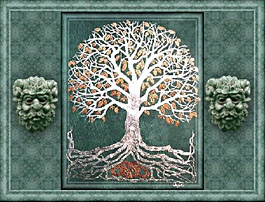 |
Branches
&
Membership |
|
|
There are three branches of the Order, namely Groves, Chapters and Circles. When a candidate is initiated into the Order he becomes a member of the Grove and he may later become a member of the Fun Branch of the Order, called The Chapter. There is also a Sisterhood which is called the Circle Branch in which the women predominate, however, brothers may become members of this Branch.
Qualification for Membership
Applicants for membership must be of unblemished character, mentally and bodily sound. He must also recognize and respect The Supreme Power of the Universe.
The age of admission is from 18 to 50 years of age. Men of the age of 17 years and over 50 may become social members.
< to Top of Page > |
|
| |
|
|
|
Eight Points
In Favor
of the
Druidic
Order |
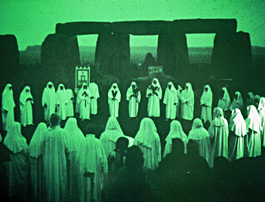 |
|
| |
- Because it is the oldest Order in the world.
- Because it is based upon sound and universal principles.
- Because its object is to unite men together irrespective of nationality or creed.
- Because through a well regulated system of dues, it affords protection in sickness and in death.
- Because it cares for the widows and orphans of deceased members.
- Because it believes in the universal brotherhood of man and as such does not interfere with religion or politics.
- Because if you travel, you will find Druids always willing to help you in business or otherwise.
- Because Druidism advocates absolute respect to the flag and obedience to the laws of the country under which you live. If you will join the American Druids (a branch of the United Ancient Order of Druids of the world), you will be a better citizen.
< to Top of Page >
|
|
| |
|
|
| |
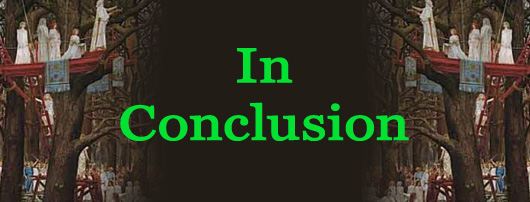 |
|
| |
Conclusion
In becoming Druids men violate no moral obligation. In Druidism there is nothing which will interfere with one”s duties to his God, his country, his family or to himself. Druids are expected to respect the Flag and give strict obedience to the laws of the United States of America.
Druids enjoy niceties of an Order dedicated to the principles to respect and nurture the Dignity of Man; Friendship and Sociability; Charity; Belief in the Fatherhood of God and the Brotherhood of Men. An Order which teaches one to be a Good Neighbor.
< to Top of Page > |
|
 |
|
 |
|














